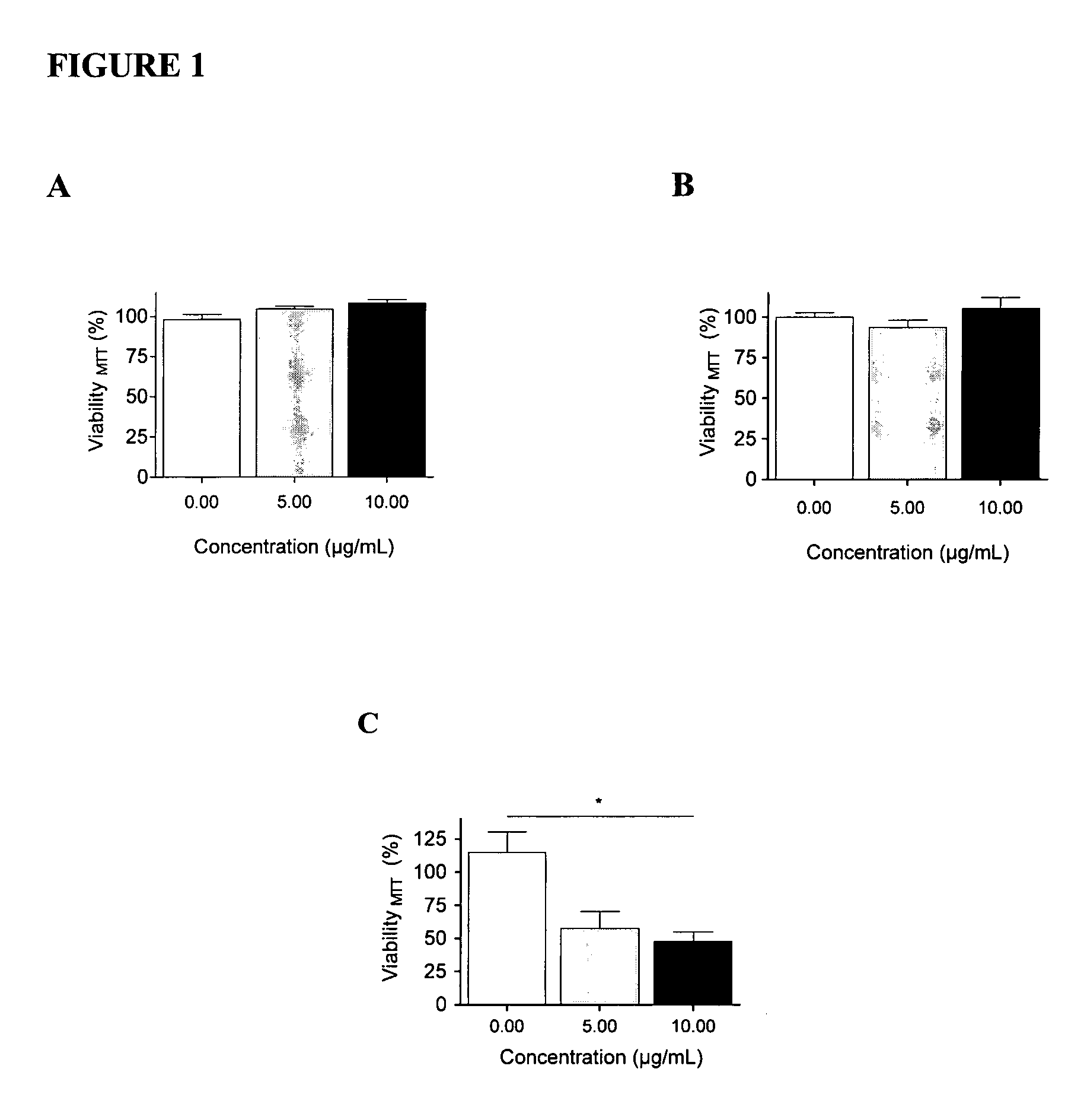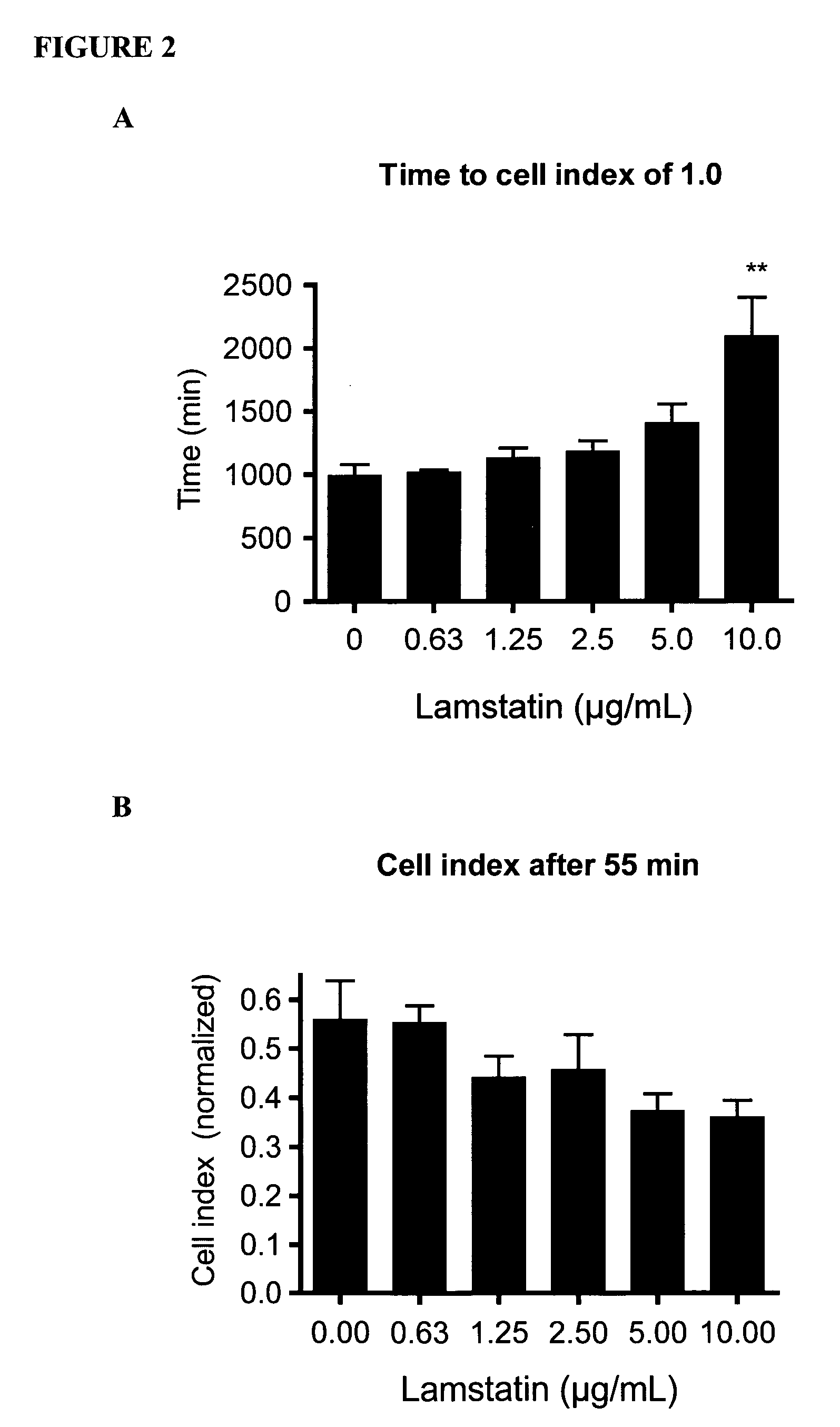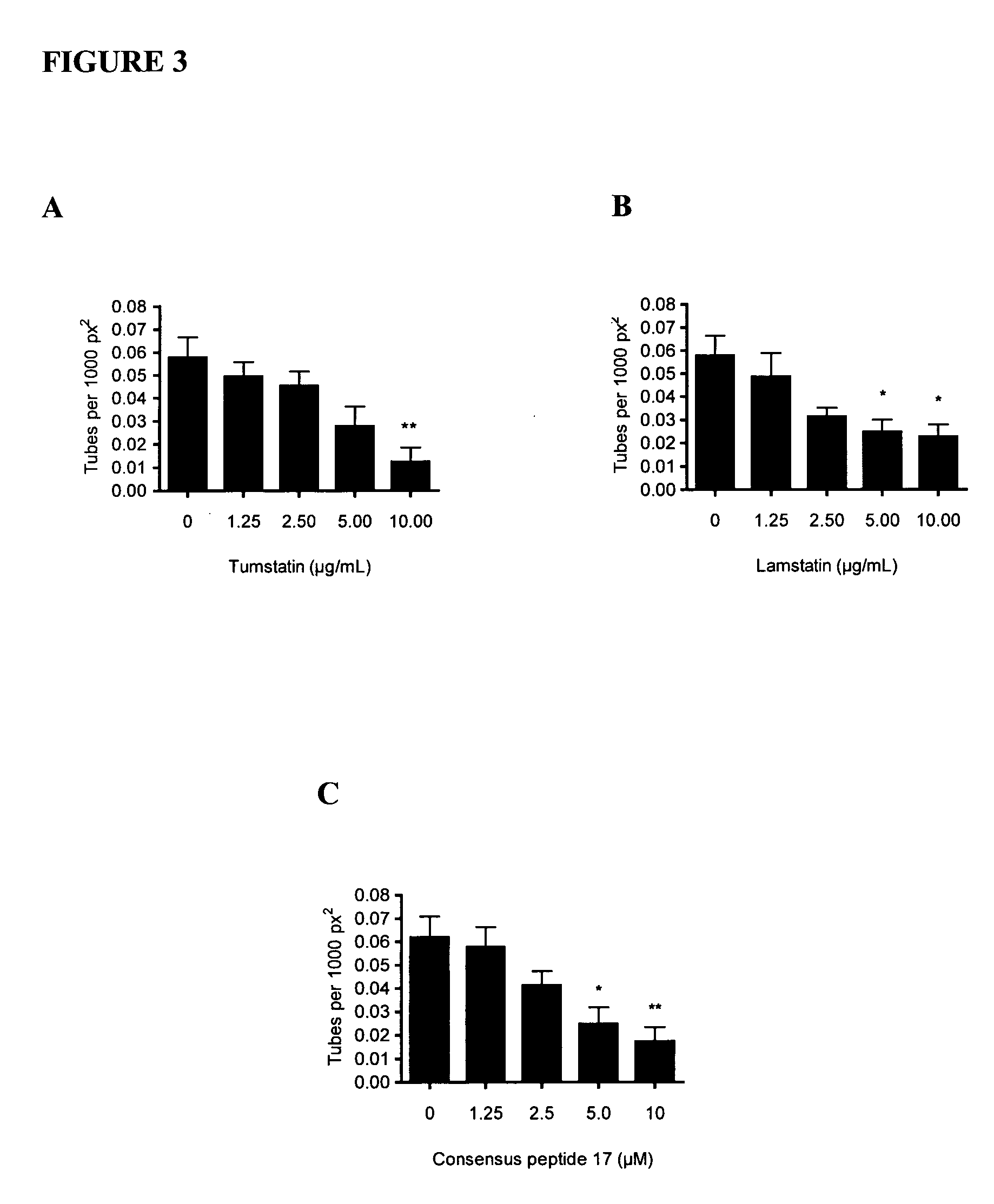Methods of treatment
a lymphatic system and lymphatic system technology, applied in the field of lymphatic endothelial cells, can solve the problems of cancer patients' death, cancer metastasis, and surprisingly little is known about the mechanisms leading to metastasis via the lymphatic system, and achieve the effect of increasing the expression or production of the nc1 domain polypeptid
- Summary
- Abstract
- Description
- Claims
- Application Information
AI Technical Summary
Benefits of technology
Problems solved by technology
Method used
Image
Examples
example 1
Lymphatic Endothelial Cell Viability and Proliferation
[0084]To date, an understanding of the function(s) of the NC1 domain of the α5 chain of collagen type IV (lamstatin) have remained elusive. In contrast, roles have been identified for the NC1 domain of the α3 chain of collagen type IV (tumstatin). Tumstatin has been shown, for example, to be anti-angiogenic, to induce apoptosis in proliferating endothelial cells and to be downregulated in airway tissues which have undergone remodelling (see for example co-pending international patent application PCT / AU2007 / 000106, the disclosure of which is incorporated herein by reference in its entirety).
[0085]To determine the function of lamstatin, human primary lymphatic endothelial cells (HMVEC-LLy cells) were exposed to various concentrations of lamstatin and an MTT assay was performed. As a comparison, commercially available tumstatin was used. Specifically, to assess cell viability 4×103 HMVEC-LLy cells were seeded per well in 100 μl comp...
example 2
In Vitro Lymphatic Tube Formation and Cell Migration
[0090]Tube formation by HMVEC-LLy cells in the presence of lamstatin, tumstatin and a peptide fragment, designated herein CP17, was assayed.
[0091]To assess formation of tubular structures, 48 well plates were coated with 130 μL Matrigel® (BD Bioscience), which was solidified at 37° C. over 45 min. 2×104 HMVEC-LLy cells in complete EBM-2 (500 μL) were seeded per well and allowed to attach for 30 min, before lamstatin, tumstatin, CP17 or vehicle was added to the wells. Photos were taken with a Kodak Digital Camera every 2 hrs. Tube formation peaked at 24 hrs, at which time tubular structures were further analysed to determine length (in pixels) and number of tubes per high power field (HPF) area (px2). The HPF was divided in nine regions of equal size and tubes per region were counted. Mean and SEM were calculated and plotted.
[0092]The date provided in FIG. 3 suggest a role for lamstatin, tumstatin and functional peptide fragments th...
example 3
Integrin Binding to Lamstatin
[0096]The attachment of cells to surrounding cells or molecules in the extracellular matrix is mediated by cell surface receptors called integrins. The inventors investigated the identity of the integrins involved in the binding of lymphatic endothelial cells to lamstatin and peptide CP17 in vitro.
[0097]Antibodies for integrin α5 (MAB1956Z; MAB1953Z), integrin β1 (MAB2253Z) and integrin β3 (MAB1957Z) (all Millipore, USA) were coated to 96 well tissue culture plates (Nunc, USA) at a concentration of 10 μg / mL overnight at 4° C. in sterile coating buffer (50 mM Na2CO3, 50 mM NaHCO3, pH 9.6). Plates then were blocked with sterile 1% BSA / PBS for 1 h at 37° C. and washed twice with EBM-2 MV (Lonza, Basel, Switzerland). MMVEC-LLy cells were carefully removed from culture flasks with non-enzymatic detachment solution (Trevigen, Md., USA) and washed twice with EBM-2 (Lonza, Basel, Switzerland). Volume was adjusted to a cell concentration of 50,000 cells / 100 μL an...
PUM
 Login to View More
Login to View More Abstract
Description
Claims
Application Information
 Login to View More
Login to View More - R&D
- Intellectual Property
- Life Sciences
- Materials
- Tech Scout
- Unparalleled Data Quality
- Higher Quality Content
- 60% Fewer Hallucinations
Browse by: Latest US Patents, China's latest patents, Technical Efficacy Thesaurus, Application Domain, Technology Topic, Popular Technical Reports.
© 2025 PatSnap. All rights reserved.Legal|Privacy policy|Modern Slavery Act Transparency Statement|Sitemap|About US| Contact US: help@patsnap.com



